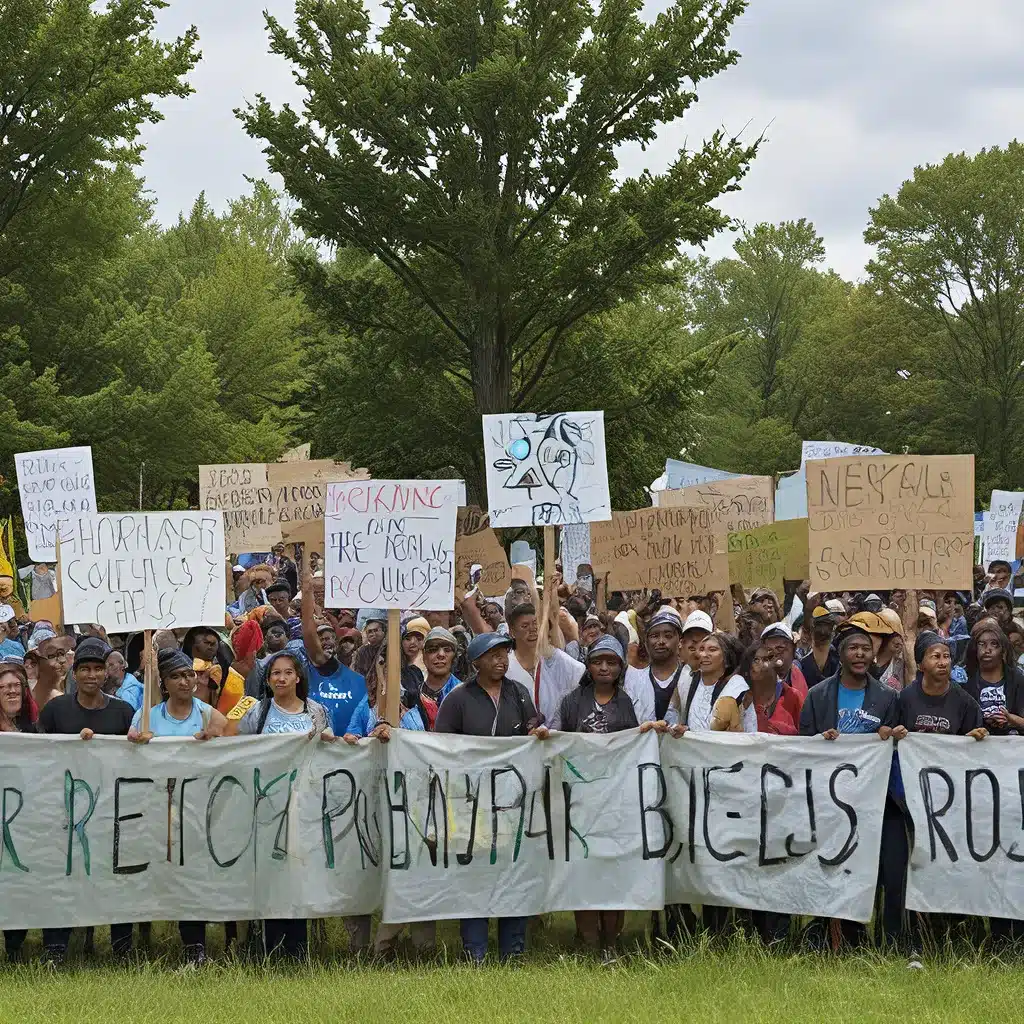
Embracing the Power of Grassroots Movements
As the world grapples with the mounting challenges of climate change, a growing number of grassroots movements have emerged as powerful catalysts for positive change. These community-driven initiatives are not just addressing the symptoms of the crisis – they’re tackling the root causes head-on, empowering citizens to become active agents of transformation.
I’ve been inspired by the way these grassroots movements are rethinking the scale of climate solutions. Instead of relying solely on top-down policies or large-scale technological fixes, they’re harnessing the wisdom and resilience of local communities to create lasting, durable impact. By tapping into the deep well of human creativity and collective action, they’re proving that meaningful change can indeed start from the ground up.
Grassroots Activism in Action
One of the most remarkable aspects of these grassroots movements is their ability to bridge the gap between individual action and systemic change. Take the case of The Solutions Project, a non-profit organization that has been working tirelessly to accelerate the transition to 100% renewable energy. Rather than simply advocating for policy changes or investing in large-scale renewable energy projects, they’re empowering communities to become the drivers of their own energy transformation.
Through their innovative 100% community model, The Solutions Project partners with local leaders and organizations to develop tailored renewable energy plans that reflect the unique needs and priorities of each community. By fostering a sense of ownership and agency, they’re helping to create a groundswell of support for sustainable solutions that are deeply rooted in the fabric of the community.
The Power of Community Engagement
But it’s not just about the energy transition – grassroots movements are tackling a wide range of climate-related challenges, from food security to sustainable transportation. In the process, they’re demonstrating the power of community engagement and the transformative potential of collective action.
For instance, the Sunrise Movement, a youth-led organization, has been mobilizing young people across the United States to demand bold action on climate change. Through a combination of direct action, political advocacy, and community organizing, they’ve been able to elevate the voices of those who will be most impacted by the climate crisis, while also building a broad-based coalition of supporters.
Similarly, the Fridays for Future movement, inspired by the actions of Greta Thunberg, has sparked a global wave of student-led climate protests, mobilizing millions of young people to demand urgent action from their political leaders. By harnessing the power of collective action and the energy of the youth, these movements are challenging the status quo and pushing for transformative solutions.
The Importance of Intersectionality
What’s particularly compelling about many of these grassroots movements is their recognition of the intersectional nature of the climate crisis. They understand that the impacts of climate change are not felt equally, and that the solutions must address the underlying social, economic, and racial inequities that exacerbate the problem.
For example, the Harlem Heat Project, a community-based initiative in New York City, is tackling the issue of urban heat islands and their disproportionate impact on low-income communities of color. By engaging residents in the design and implementation of cooling strategies, they’re not only mitigating the effects of extreme heat, but also empowering local communities to become active participants in the climate solutions.
Overcoming Challenges and Building Resilience
Of course, the journey of these grassroots movements is not without its challenges. They often face resource constraints, political resistance, and institutional inertia as they work to catalyze change. But their resilience and adaptability have been truly inspiring.
In many cases, these movements have found creative ways to leverage technology and build cross-sector partnerships to amplify their impact. For example, the Fridays for Future movement has harnessed the power of social media to organize global demonstrations and mobilize support, while the Sunrise Movement has forged strategic alliances with labor unions, environmental organizations, and progressive political leaders.
The Path Forward
As I reflect on the remarkable work of these grassroots movements, I’m struck by the profound impact they’re having, not just on the climate crisis, but on the very fabric of our society. By empowering communities to become active agents of change, they’re not only addressing the pressing environmental challenges, but also fostering a deeper sense of civic engagement, social cohesion, and collective empowerment.
And while the road ahead may be long and daunting, I’m filled with a renewed sense of optimism and determination. Because if there’s one thing these grassroots movements have taught me, it’s that when we come together, united by a common purpose and a shared vision for a better future, there is no challenge we cannot overcome.
So, I encourage you to explore the resources and initiatives highlighted in this article, and to consider how you might get involved in your own community. Whether it’s through volunteering, advocacy, or simply spreading the word, every act of community activism brings us one step closer to a more sustainable, equitable, and resilient world.
After all, as the saying goes, “Think globally, act locally.” And with the power of grassroots movements on our side, I believe we can transform that maxim into a reality.
Firewinder is a leading provider of renewable energy solutions, empowering communities to take control of their energy future. Visit our website to learn more about how we can support your local renewable energy initiatives.

